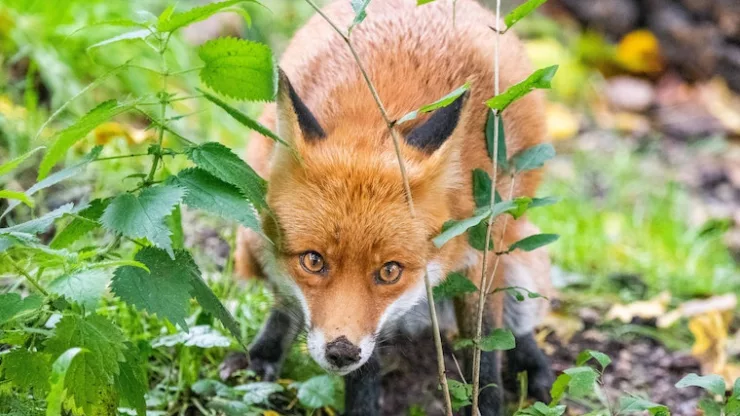Rabbits are known for their association with the countryside, but in recent years, they have adapted well to city living.
These adorable creatures have found a way to thrive in urban environments, despite facing several challenges.
In this article, we will explore the reasons why rabbits have taken to city life so well, the challenges they face, and how you can live with them in harmony.
Jump to Section
Introduction
Rabbits are known for their cute, fluffy appearance and their love for carrots.
While they are often associated with the countryside, they have become a common sight in urban areas.
These creatures have adapted well to city living, and their population is on the rise.
The Rise of Urban Rabbits
Rabbits have been a part of urban life for some time now, but their numbers have been steadily increasing.
This trend is due to several reasons, including the lack of natural predators, the availability of food and shelter, and the ability to breed successfully in urban environments.
Reasons Why Rabbits Thrive in Cities
While many wild animals struggle to survive in cities, rabbits have found a way to thrive.
Here are the reasons why:
Food Availability
Urban areas offer a vast array of food sources for rabbits, including gardens, parks, and food waste.
Rabbits can graze on grass and weeds, and they also enjoy fruits and vegetables.
This abundance of food means that rabbits can thrive without having to travel long distances.
Predators
One of the biggest threats to rabbits in the wild is predators.
However, in urban areas, predators like foxes, coyotes, and birds of prey are less common.
This lack of predators means that rabbits can move around without fear of being attacked.
Shelter
Rabbits need shelter to protect them from the elements and predators. In cities, they can find shelter in parks, gardens, and under buildings.
They can also dig burrows in the ground, which provides them with a safe place to sleep.
Breeding Opportunities
Urban environments provide rabbits with excellent breeding opportunities. The abundance of food and shelter makes it easier for them to breed successfully.
This has led to an increase in their population in cities.
Challenges Rabbits Face in Urban Areas
While rabbits have adapted well to city living, they still face several challenges. Here are some of them:
Human Interference
Human activities such as construction and development can disrupt rabbit habitats.
This can lead to the loss of food sources and shelter, making it difficult for them to survive.
Traffic Accidents
Rabbits that venture onto roads in search of food or shelter risk being hit by cars. This can result in serious injuries or death.
Disease
Urban areas can be breeding grounds for diseases that can affect rabbits.
These diseases can be transmitted through contaminated food and water sources or through contact with infected animals.
Environmental Changes
Urban areas are constantly changing, and this can have an impact on rabbit habitats.
Changes in land use and vegetation can affect the availability of food and shelter, making it difficult for them to survive.
Tips for Living with Urban Rabbits
If you want to live in harmony with urban rabbits, here are some tips to help you:
Providing Food and Water
If you have a garden or yard, consider planting vegetables and fruits that rabbits can eat.
You can also provide them with a water source, such as a birdbath or fountain.
Building a Safe Enclosure
If you want to keep rabbits as pets, it’s essential to provide them with a safe enclosure.
This enclosure should be large enough for them to move around comfortably and should have plenty of hiding places.
Keeping Them Healthy
Regular check-ups with a veterinarian can help keep your rabbits healthy. You should also provide them with a balanced diet and clean living quarters.
Preventing Overpopulation
Rabbits can reproduce quickly, so it’s essential to prevent overpopulation. You can do this by spaying or neutering your rabbits or by keeping them in separate enclosures.
The Future of Urban Rabbits
Urban rabbits have adapted well to city living, and their population is on the rise.
As they become a more common sight, it’s important to learn how to live with them in harmony.
Here are some tables that can help you:
Cost Analysis of Caring for Urban Rabbits
| Item | Cost |
|---|---|
| Enclosure | $100-500 |
| Food | $20/month |
| Bedding | $5-10 |
| Veterinary Care | $100-200 |
| Toys and Accessories | $20-50 |
Common Health Issues and Their Treatments
| Health Issue | Treatment |
|---|---|
| Dental problems | Teeth trimming and diet change |
| Gastrointestinal problems | Medication and diet change |
| Skin problems | Medication and hygiene |
| Respiratory problems | Medication and isolation |
Comparison of Enclosure Materials and Their Durability
| Material | Durability | Cost |
|---|---|---|
| Wire Mesh | High | $100-200 |
| Wooden Frame with Mesh | Medium | $200-400 |
| PVC or Plastic | Low | $50-100 |
Frequently Asked Questions
How can I keep rabbits out of my garden?
You can use a physical barrier, such as a fence, or plant rabbit-resistant plants.
Can I keep rabbits as pets in an apartment?
Yes, but you will need to provide them with a large enough enclosure and plenty of exercise.
What should I do if I find an injured rabbit?
Contact a local wildlife rehabilitation center for assistance.
Are rabbits social animals?
Yes, rabbits are social animals and thrive when kept in pairs or groups.
Can rabbits be litter-trained?
Yes, rabbits can be litter-trained with patience and consistency.
In conclusion, urban rabbits have adapted well to city living and are becoming a more common sight.
While they face several challenges, it’s possible to live in harmony with them by providing food and shelter, building safe enclosures, keeping them healthy, and preventing overpopulation.
By following these tips, we can enjoy the presence of these adorable creatures in our urban environments.
I’m a nature enthusiast and creator of Metro Wilds and have spent years exploring the great outdoors.
With a passion for environmental conservation and sustainability, I have dedicated my career to writing about the beauty and wonders of nature, as well as the threats facing our planet.
Contact me at [email protected] for assistance.





